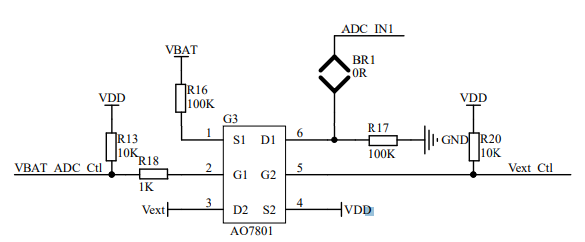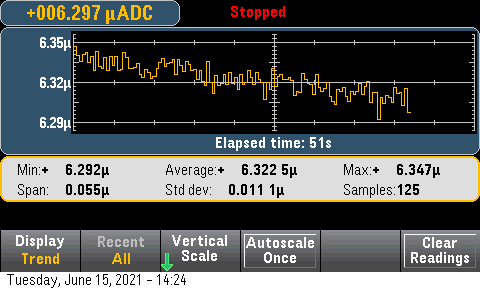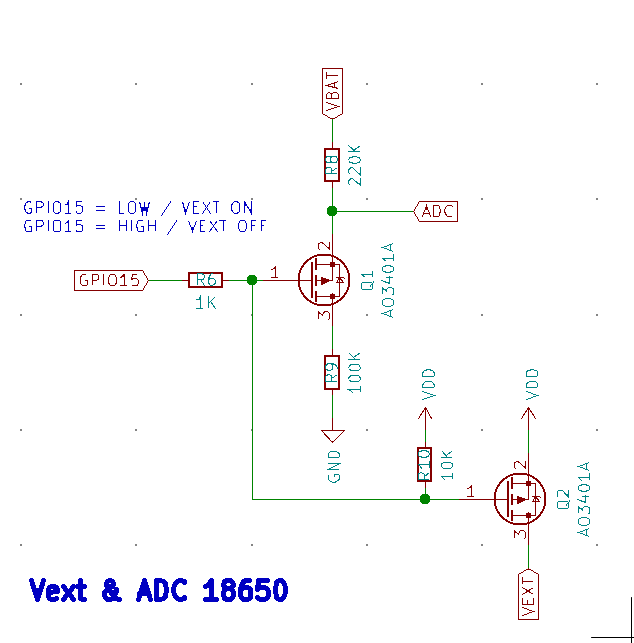Thank you for your response.
So by design, when GPIO15 is LOW, V(ADC)= with my battery 3.7V to 4.2V. I don’t understand with a circuit is propose knowing that ADC can’t support more than 2.4V. What kind of damages can it cause? Maybe more power consumption?
I really want to be sure for my next PCB design and be sure that any mistake is done with the recommended manufacturer design.
I also need to use one capacitive sensor with GPIO as output and ADC and on the Arduino example the simplest way to wire the sensor is to use GPIO as output and ADC for reading. With the 2.4V limitation, how can I use this one? http://community.heltec.cn/t/cubecell-and-second-serial-port/693/9
Thank you to both of you
@ksckung @jasonXu







